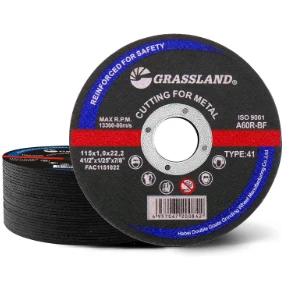

A less conventional but highly effective type of bond is the metal bond. Comprised of metal powders and other materials, metal bonds offer extraordinary robustness and longevity, with superior grit retention. These properties make metal bonds suitable for tough grinding applications involving hard or abrasive materials such as glass, ceramics, or stones. Despite being more expensive than other bond types, metal-bonded wheels provide exceptional performance for tasks requiring high precision and durability. They find applications in industries such as construction and jewelry making, where intricate designs and resilient finishes are crucial. The rubber bond type is another significant category, providing flexibility beyond that of resin bonds and often being used in applications where shock absorption and operational smoothness are vital. Rubber-bonded wheels are employed in applications such as centerless and control wheels for regulating. Due to their ability to perform under varying loads without deforming, these wheels are often found in the metalworking industry, especially where delicate parts are involved. Lastly, there are epoxy bonds, which represent a distinct niche in grinding wheel technology. Epoxy bonds bring a unique set of attributes—extreme toughness and the ability to withstand harsh chemical environments. Epoxy-bonded grinding wheels are often used in specialized applications requiring fine-tuned methods, such as semiconductor wafer slicing or certain composite applications in the aerospace industry. Choosing the right grinding wheel bond type involves a meticulous balance of application demands, material work, and finished product requirements. Making informed decisions not only enhances productivity but ensures tools' longevity and accuracy, ultimately leading to higher quality finished goods. Practitioners in different industries must understand these bond types' nuanced characteristics and employ them effectively to optimize their grinding operations, fulfilling Experience, Expertise, Authoritativeness, and Trustworthiness in their respective domains.
Post time:Jan - 11 - 2025

















